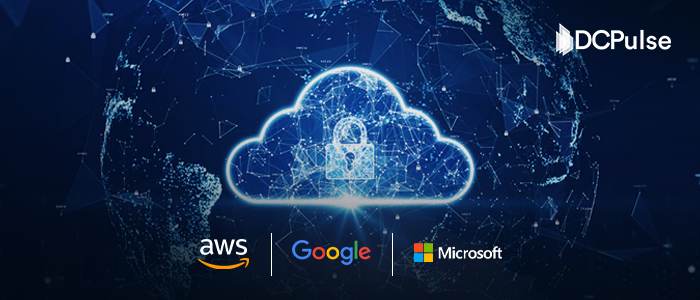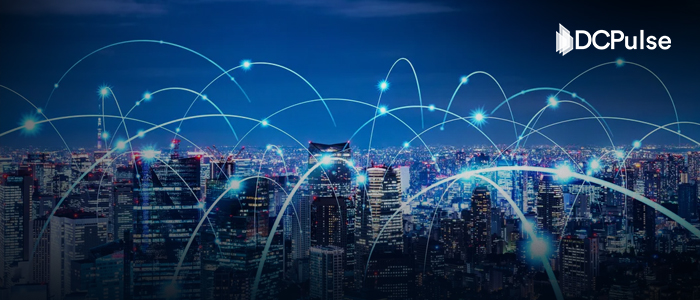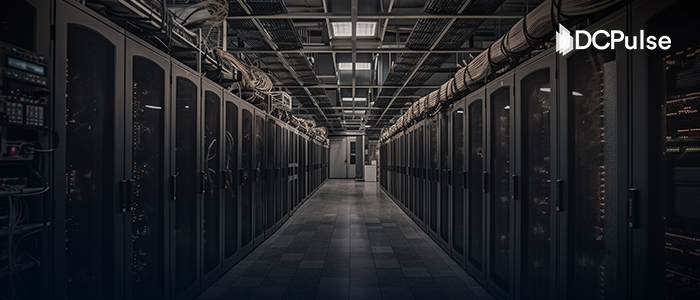The Cloud Is Thirsty and Is Drinking Cities Dry
In the race to power artificial intelligence and cloud computing, data centers, the massive server farms supporting the modern tech, have become the backbone of the digital world. But beneath the blinking servers and terabytes of traffic lies a resource few associate with tech: water.
A single hyperscale facility can consume millions of liters per day; an average 100 MW data center uses roughly 2 million liters of water daily, enough to fulfill the needs of a small town. Globally, the sector now consumes over 560 billion liters per year, and as much as 1.200 billion liters by 2030.
This explosive growth is putting fresh pressure on watersheds that are already under significant stress. Ghinwa Chammas, Director of group sustainability at the British Standards Institution (BSI), warns, “Any use of freshwater on a large scale needs to recognise that the world’s water security challenge is as urgent a crisis as that of climate change.”
Increasingly, these facilities are being built in places where water is already running out. From the drought-stricken suburbs of Phoenix to the parched plains of northern Chile, the cloud is pulling from the same wells that communities, farmers, and ecosystems depend on. Unlike carbon, there’s no offset for a dry riverbed.
When Hyperscale Meets Hydrostress
To meet this surging digital demand, hyperscalers are rapidly building new data centers, and many of these facilities are being placed in regions that frequently suffer from droughts and water shortages.
In the U.S., roughly 40% of existing and planned data centers are located in regions classified as facing “high” or “extremely high” water stress by the World Resources Institute. That share climbs to 43% for the larger facilities, those consuming more than 40 MWh of electricity per hour.
Just five states, Virginia, Texas, Arizona, California, and Illinois, contribute to 72% of these new centers, highlighting how concentrated this pressure is in areas already struggling with water scarcity.
Leading much of this expansion are two tech giants in particular, Microsoft, operating 23 data centers, and Amazon, with 81, which account for a significant share of their projects in high water-stressed regions. As a proportion of their total U.S. facilities, Microsoft tops the list, with 52% of its centers located in these arid zones.
"It's been challenging because they are a big company, and we are a small city,” said Bill Stipp, a City Council member in Goodyear, Arizona, who approved multiple phases of the project, despite raising water concerns.
A significant portion of this strain comes from how data centers cool their servers. Most companies rely on the evaporative or swamp cooling technique, where the air is passed through absorbent wet cooling pads. These pads are kept constantly moist by supplying water through a pump. When the air carrying latent heat interacts with the water, the water evaporates, cooling the air, which is then blown into the centers. Which means 80% of the water used gets lost in evaporation.
The efficiency of these systems comes at a high environmental cost, especially in regions where every drop counts.
The Water Use Blind Spot in Global Data Center Regulation
In 2024, the European Union took a landmark step by requiring data centers to report both their energy and water usage data under the revised Energy Efficiency Directive (EED). The mandate requires operators to submit facility-level data to a centralized EU database, part of a broader effort to strengthen sustainability standards across the industry.
“Ultimately, the reality is, when the EU adopts these reporting requirements, be very sure that many other countries will start adopting the same or very similar requirements,” said Cándido García Molyneux, an environmental lawyer at Covington & Burling
This transparency drive is designed to reveal where massive data centers are overdrawing from already scarce water supplies.
Other the EU, Many countries are rolling out broad climate disclosure laws, but these target corporate greenhouse gas and climate risk, not the water levels used by facilities. In the U.S., efforts to mandate climate and resource reporting by large companies are tied up in court. In March 2025, the U.S. Securities and Exchange Commission (SEC) announced it would no longer defend its climate-related disclosure rules in court.
“The SEC’s decision to abandon its own climate-related disclosure rule is disappointing,” said Kathy Fallon, Director of Global Land Use and Climate Change at Clean Air Task Force, addressing the issue.
Georgia passed a bill, HB 1192, which would’ve paused new datacenter salestax exemptions, but was vetoed by Governor Kemp in May 2024. Who criticized it as disruptive to investment and growth
A range of data-center regulatory bills, including energy standards and local water or cooling siting provisions, were proposed in 2024 in Virginia but were mostly defeated or deferred
Several local jurisdictions, like Chandler, their 2022 ordinance established planning-area restrictions, noise studies, and backup-generator protocols, but made no mention of water consumption. Similarly, Fairfax County’s updated 2024 zoning amendment mandates setbacks, facade screening, and noise mitigation for data centers, but, again, does not regulate water withdrawals
In short, no uniform rule or clear mandates force transparency on data center water use in the U.S. or most of the world, allowing companies to continue extracting vast amounts of water without facing any accountability.
In the absence of regulatory measures, local communities are left to blow the whistle, taking matters into their own hands.
The Ground Truth: How Data Centers Are Draining Local Trust
Local communities are already feeling the squeeze, prompting civil society and local activists to step in. In Northern Virginia, known as the “Data Center Alley,” water usage by server farms has surged dramatically. In 2023 alone, facilities withdrew 7 billion liters of water for cooling, a 64% increase since 2019.
The freshwater consumption by data centers in Loudoun County has jumped by 250% since 2019, resulting in a drought-like situation in the region, contributing to dry taps and citizen outcry.
In Oregon, a citizen-led lawsuit forced a water district to release water-usage data for a Google facility, after residents discovered it was consuming around one-third of the city’s municipal supply. According to government records obtained following a 13-month legal battle, the data center used approximately 355 million gallons in 2021, about 29% of the city’s total consumption.
Dawn Rasmussen, a resident, said, “I'm flabbergasted, and I'm scared for the future. As we continue to be in drought conditions and the natural water table continues to get depleted, the city itself is going to start to struggle.”
When CoreSite, the data center developer, proposed a Denver DC site that required ~805,000 gallons per day, enough for 16,000 homes, the city withdrew a USD 9 million tax incentive under public pressure.
"I am very concerned about a tax incentive for a company that is using some of our most valuable resources," said councilwoman Flor Alvidrez at a council committee meeting.
In September 2024, community pressure in Chile led a court to temporarily revoke Google’s water-intensive project permit in Santiago.
This trend is even seen outside the U.S., where locals are pushing back. In Bengaluru, India’s worst water crisis in 500 years has been compounded by roughly 115 MW of datacenter capacity drawing an estimated 8 million liters per day, so much so that public backlash helped fuel election boycotts, even as the sector’s role in the crisis has largely gone unexamined.
In the Netherlands, villagers in Zeewolde forced the government to revoke permits for Meta after massive protests over groundwater concerns.
South America saw resistance too, Uruguayans, facing their worst drought in 74 years, tracking back to the operation of Google’s plants there.
Across continents, the pattern is clear: these conflicts underline that data center water use is not just a technical issue but a social one. Farmers and cities will refuse to yield water to tech companies without accountability.
Rightly put by Marshall Brown, Water General Manager, Aurora, “you're going to have to figure out how to be efficient.” Or you are out of Luck.
Toward Solution
While regulation stalls and public pressure mounts, some in the industry are quietly rethinking how data centers use water. A glimmer of innovation can be seen, a growing number are piloting low-water cooling systems, such as immersion or cold plate technologies, where liquid coolant is applied directly to the chips, slashing or even eliminating evaporative loss.
A Microsoft study found that replacing traditional air cooling with cold plates or full immersion can cut energy use by 15 to 20 percent, and water usage by 31 to 52 percent over their entire life cycles.
Google, too, has shifted a planned Mesa, Arizona center from waterspray cooling to air cooling, avoiding an earlier request for up to 4 million gallons per day.
"I just don't think water-cooled data centers should be in the desert," said Jenn Duff, Mesa City Council member.
In Northern Virginia, AWS now operates some facilities on 100% recycled water, showing what’s possible when water stress becomes too visible to ignore.
Beyond hardware, a growing number of companies are turning toward water stewardship, treating water not just as a utility but as a shared resource that must be managed responsibly. Recently, in March 2025, Google signed four partnerships to support watersheds in Chile, California, Taiwan, and France.
AWS and others fund wetland and reservoir projects to replace every drop they pump from aquifers. These “circular water” approaches are growing; it is recorded that only about one-third of data center operators even track water usage today
Finally, policymakers are catching on. In some Western cities like Aurora, Colorado, regulators now require new data centers to secure extra water rights or prove conservation measures before approving permits. Developers who won’t comply are simply asked to look elsewhere.
According to Sean Farney, Vice President of data center strategy at JLL, “ultimately, the viability of new data centers may increasingly hinge on local water conditions as much as on power availability or fiber routes.”
If this becomes the new norm, data centers will have to fully integrate water into their site selection and design from day one.
The bottom line
Our digital future depends on data centers, but data centers depend on water, a resource growing ever scarcer in many of the locations they want to go. Ensuring that data centers don’t drain the last drops from thirsty regions will require much more transparency and accountability than today.
Warned by Shaolei Ren, a professor in the Computer Science department at the University of California, Riverside, “We have almost zero information about AI's real water footprint.”
Facing that unknown, communities and regulators are rightly demanding that the tech industry invest in sustainable cooling and open up about its water use, because, unlike electricity, you can’t recycle the river after it’s gone.





